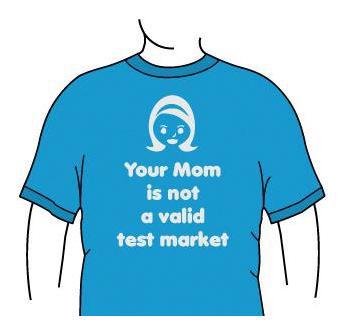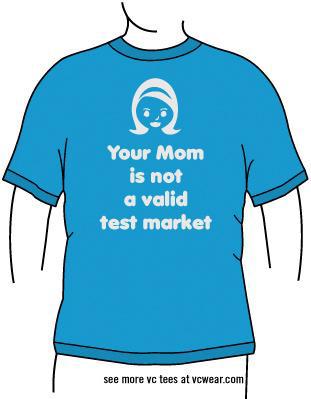Yes, but who said they’d actually BUY the damn thing?

Editor’s note: This article was written in 2010, three years before The Mom Test was published.
Of hundreds of startup pitches at the Capital Factory incubator in Austin, Texas, almost none had unearthed 10 people willing to say, “If you build this product, I’ll give you $X.”
Meditate on this: Hundreds of people ready to quit their day jobs, burn up savings, risk personal reputation, toil 70 hours per week, absorb as much stress as having a baby (believe me, I’ve done both)…. all without identifying even ten measly people actually willing to pay for what they’re peddling.
Short-sighted, no?
If you can’t find ten people who say they’ll buy it, your company is bullshit.
Aren’t you sick of every startup blogger on Earth badgering you about this? Steve Blank says “get outside the building,” Eric Ries says “seek validated learning,” Sean Ellis says “seek product/market fit,” Drew Houston says “the only way to learn on a $0 budget is to talk to people.”
I say “find ten people who say they’ll buy.” I say “get off your ass and produce hard evidence that customers are in your future light cone.” I even tell you how to interview customers and how to do everything else.
But you’re still not listening. You repeat these mantras at Lean Startup Meetings but you’re not doing it.
You’re understandably scared of been proved wrong, especially now that you’re all worked up about the new business idea, and extra especially after you’ve already told friends and family you’re doing this and they’re expecting you to complete your quest.
But jeez people, you’re not even trying. And worse, you’re inventing lame excuses for why you’re not trying.
One excuse is: “I don’t know how to get 10 people to talk to me, before I have a product.” OK, here are a huge number of ways that other entrepreneurs have successfully used. Pick one or two.
Full power to forward shields y’all, I’m coming for you.
“I’m scratching my own itch. Since I’m my own target customer, I already know what to build.”
Oh! I didn’t realize your typical customer is observant enough to recognize monetizable pain, creative enough to invent products, able to convince others to work for free and invest money and time with you, and passionate enough to quit her job to pursue unproven ideas.
Fooey! By definition, if you’re a startup founder you’re explicitly not your customer.
“Scratching your own itch” is how all three of my companies started, but it’s only that—the start. It’s the spark of inspiration, not the strategy. It’s the grain of sand tickling the oyster, not the pearl.
Look! Smart people agree:
“Be a user of your own product. Make it better based on your own desires. But don’t trick yourself into thinking you are your user.” — Evan Williams, founder Blogger & Twitter
“If the VP of Engineering thinks the target customer is just like him/her, you’re doomed. If the VP of Marketing thinks the target customer is just like him/her, you’re doomed.” — Cranky Product Manager
“Our customers did a lot of stuff that I would never do. We think differently. We solve our problems differently. We have different needs and wants. Repeat after me: You are not your customer.” — Eric Ries, Lean Startup leader (repeating a conversation with a startup founder)
In fact I challenge you to find one founder of a real business who thinks “I’m the customer” is the only market validation you need. If you still don’t believe me, here’s a whole article debunking this idea in detail.
“There are millions of potential customers, so it doesn’t matter what only ten of them think. I need to just start; later I can survey and learn something statistically significant.”
If there are millions, it’s trivial to find ten. If you can’t find even ten, then either there’s not millions or those millions aren’t interested in you.
Businesses don’t start with millions of customers, they start with one, then ten, then a hundred, and then a thousand. But most don’t get past ten.
If you haven’t gotten ten to at least say they’ll buy, where do you get your hubris to proclaim that thousands actually will buy?
“My customers can’t understand mock-ups. I have to build it first.”
You shouldn’t need screenshots or PowerPoints to convince someone in your target market that what you’re doing is compelling. If your concept is so esoteric that you can’t describe it in 30 seconds at a cocktail party, it’s either too complex or you don’t understand it yourself.
Take me and WP Engine. I got thirty people to tell me they’d pay $50/mo for this service before I had a company name, a website, a product, a co-founder, or an employee. And don’t say it’s easy for me because I’ve done this before—the full story is that I had other ideas which proved to be crap.
Even if I concede that sometimes you need a mock-up, and that some folks can’t grok mock-ups, remember that your first customers will by definition be early-adopters who are OK with alpha software. If you can’t find a few of those and get them excited about your product, maybe your product isn’t exciting.
“I suck at sales/marketing; I need to build a product so compelling it sells itself.”
The world is filled with decent products that make no money. You know this!
Oh fine, you want empirical evidence? For the top 100 Twitter clients:1
1 Editor’s Note: This was in 2010 when there were over 150 Twitter clients.
- How many do you suppose are decent pieces of software that basically work? (My guess: 80%)
- How many do you suppose produce any revenue? (My guess: 5%)
- How many do you suppose produce enough revenue that, after hosting and marketing expenses, they result in a profitable company where the owner doesn’t need a day job? (My guess: <1%)
Conclusion: If your goal is a business (not a hobby), building charming, novel software isn’t enough.
You and I know you have the ability to build cool new software. We agree that will be fun and exciting. But that’s not going to create a business.
Writing code is what you love, so you myopically decide that’s what you’ll do. But what you should do is just the opposite: Attack the part of the business you’re least sure of, you’re least qualified for.
If you’re still not convinced, think of it as project risk management. In a big software project do you tackle the high-risk, ill-defined stuff first, or do you postpone that to the end? Obviously you address the uncertain stuff first—most of project risk is created by the unknown, so the earlier you can sort out uncertainty the more time you have to deal with the consequences.
I’m making the same argument, except the “high-risk unknown” is “everything that’s not code.” Your code will be good enough; it’s the other stuff that will probably sink your ship—unable to find customers or unable to convince the target audience they should open their wallets.
No sense in postponing it.
“My friend / brother / co-worker / dentist thinks it’s a great idea.”
Your mother thinks you’re smart and good-looking, but that doesn’t mean I do.
It doesn’t matter what non-entrepreneurs think because they’re not versed product/market fit, squeezing blood from evanescent budgets, and using Facebook for advertising instead of sharing the latest FailBlog movie.
In fact it only barely matters what real entrepreneurs think either, because they’re not expert in your problem domain, they might have outdated notions, they might be biased against certain ideas and technology, and they carry baggage from good and bad experiences (due as much to timing and luck as anything else).
The only thing that matters is that people are willing to give you money!
Business “experts” can argue all day long that it makes no sense to buy shoes over the Internet, but as long as people give Zappos $1 billion per year, it doesn’t matter what experts say.
When ten people say they’ll give you money, that’s the only validation that counts.
https://longform.asmartbear.com/customer-validation/
© 2007-2025 Jason Cohen
 @asmartbear
@asmartbear ePub (Kindle)
ePub (Kindle)
 Printable PDF
Printable PDF






